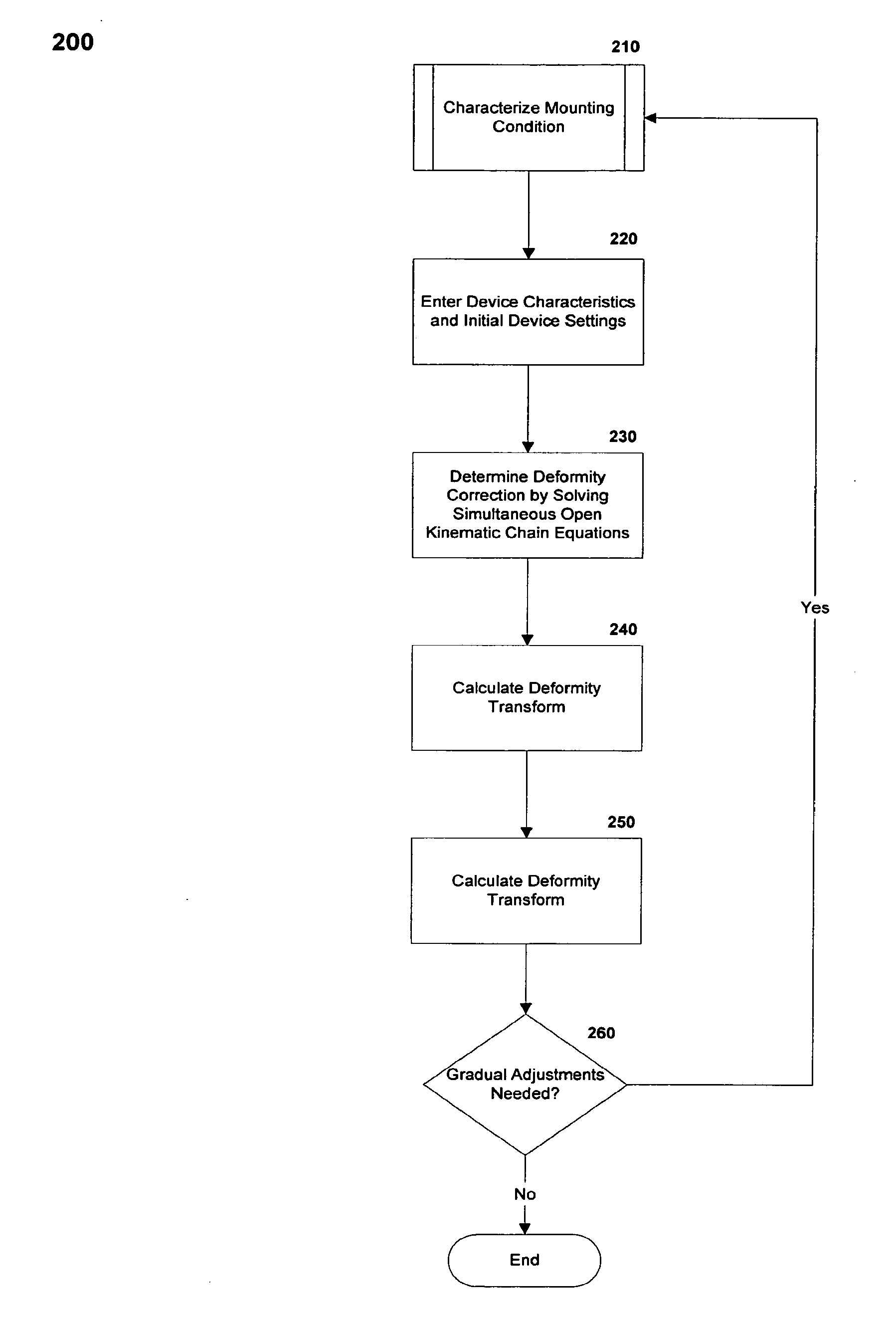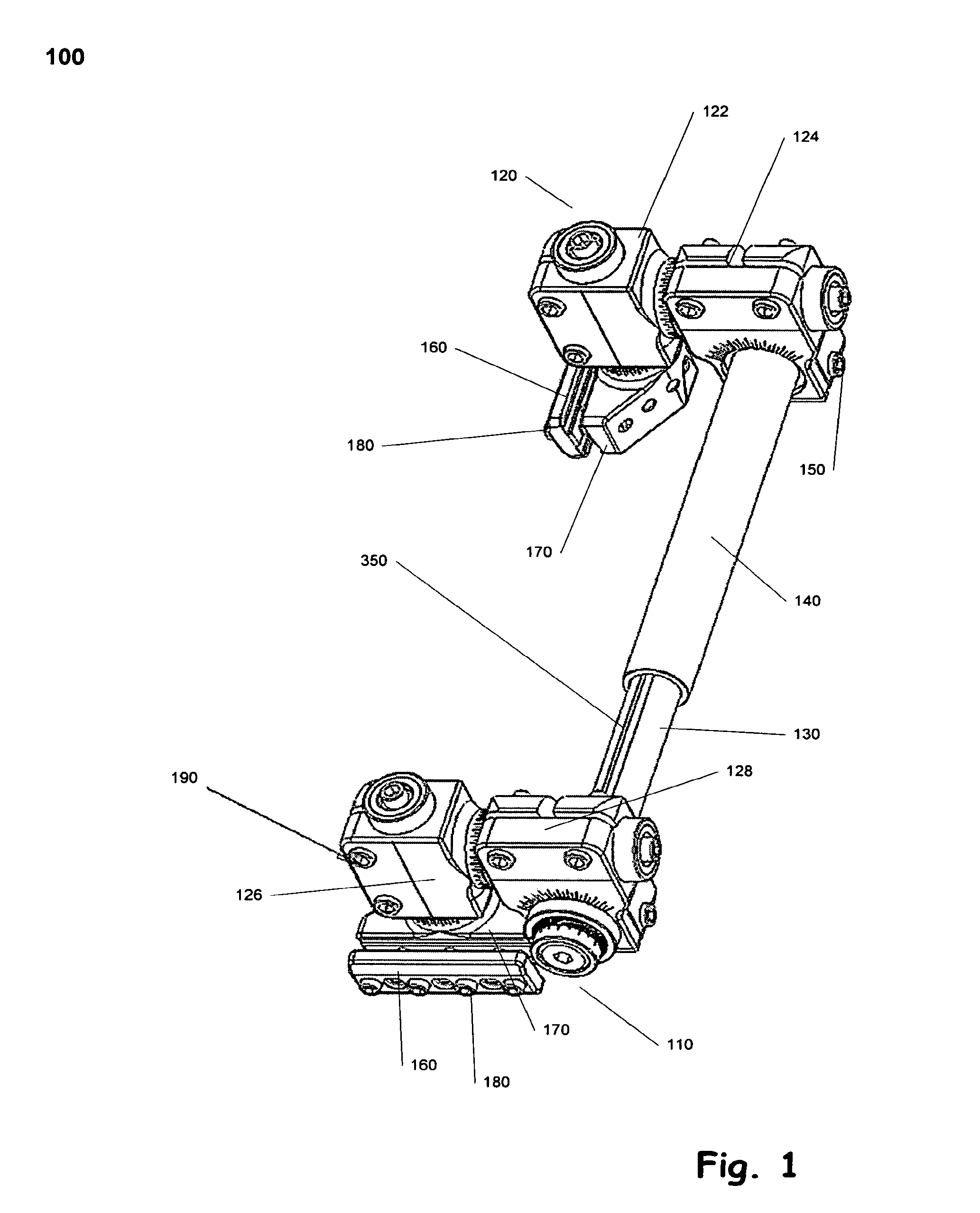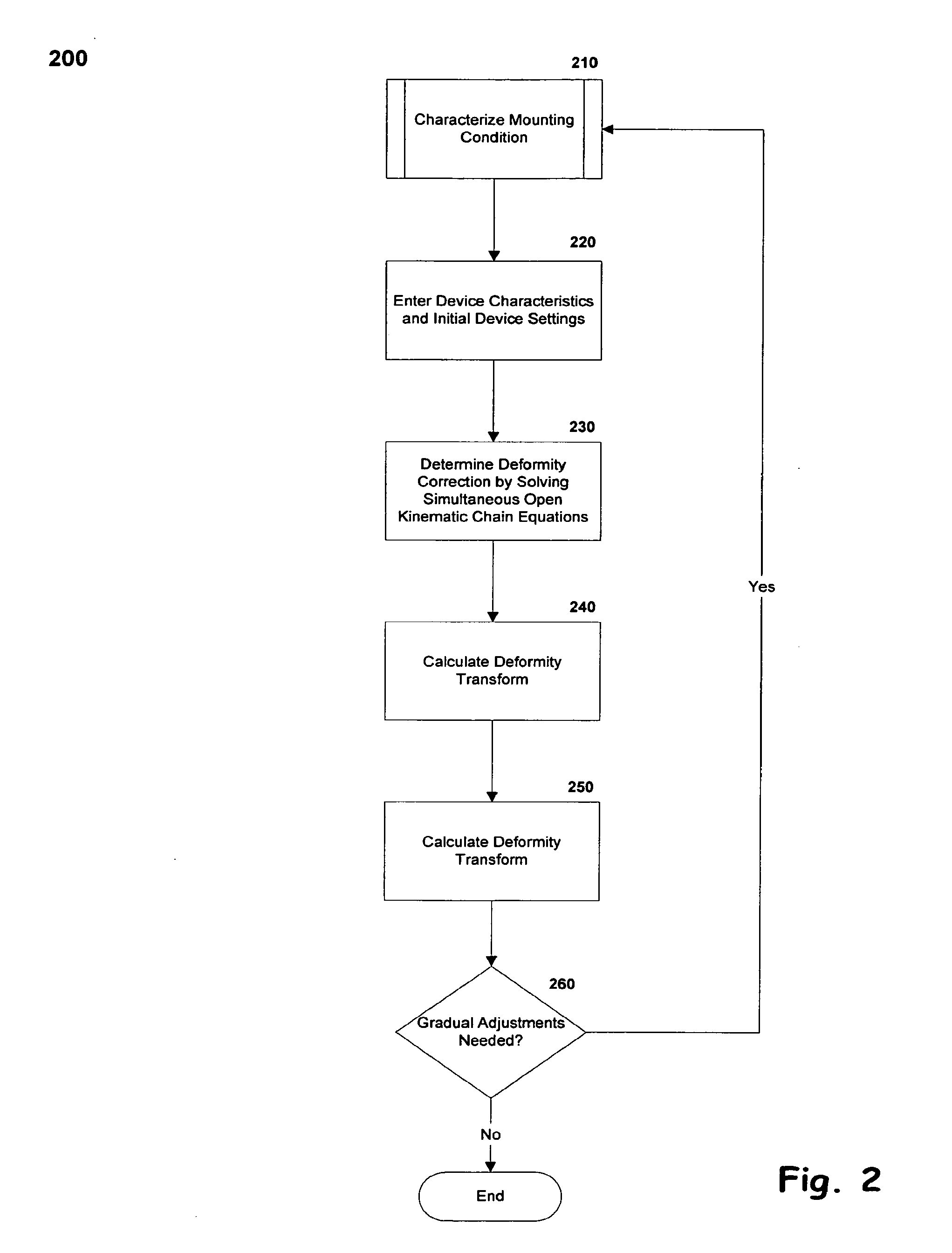Method for using a fixator device
a fixator and device technology, applied in the field of fixator devices, can solve the problems of complex set of multiple and potentially endless configurations, gross manipulation of the device as a whole, and the need to loosen the joints of the device, so as to reduce or eliminate the
- Summary
- Abstract
- Description
- Claims
- Application Information
AI Technical Summary
Benefits of technology
Problems solved by technology
Method used
Image
Examples
Embodiment Construction
[0041]Exemplary embodiments of the present invention provide a method for defining the manipulation of a fixator device and for characterizing tissue, such as bone fragments, which may be acted upon by the fixator.
[0042]FIG. 1 provides an isomeric image of an exemplary unilateral fixator 100 that may be manipulated using the method of the present invention. Referring to FIG. 1 a first compound movable joint 110 is attached to an extension strut 130 and a second compound movable joint 120 is attached to a base strut 140. These two compound movable joints 110, 120 are identical. The first compound movable joint 110 and second compound movable joint 120 each include two revolute joints 122, 124, 126, 128, the axes of which are orthogonally opposed. The second compound movable joint 120, also referred to herein as the ankle, is able to slide along, but not rotate about, the axis of the base strut 140. The first compound movable joint 110, also referred to herein as the wrist, is able to...
PUM
 Login to View More
Login to View More Abstract
Description
Claims
Application Information
 Login to View More
Login to View More - R&D
- Intellectual Property
- Life Sciences
- Materials
- Tech Scout
- Unparalleled Data Quality
- Higher Quality Content
- 60% Fewer Hallucinations
Browse by: Latest US Patents, China's latest patents, Technical Efficacy Thesaurus, Application Domain, Technology Topic, Popular Technical Reports.
© 2025 PatSnap. All rights reserved.Legal|Privacy policy|Modern Slavery Act Transparency Statement|Sitemap|About US| Contact US: help@patsnap.com



